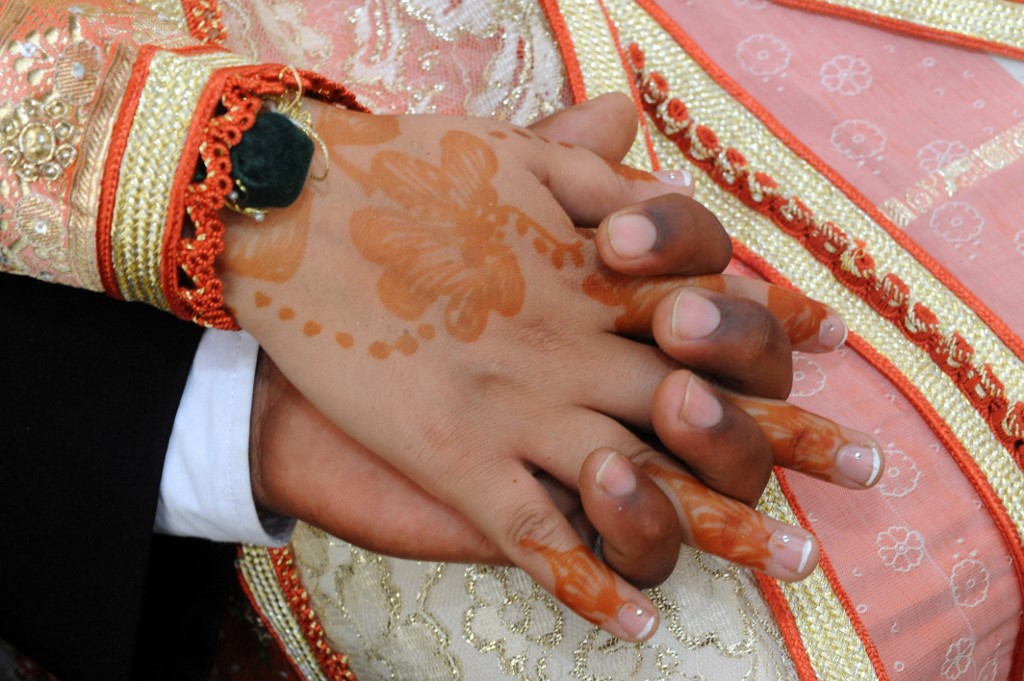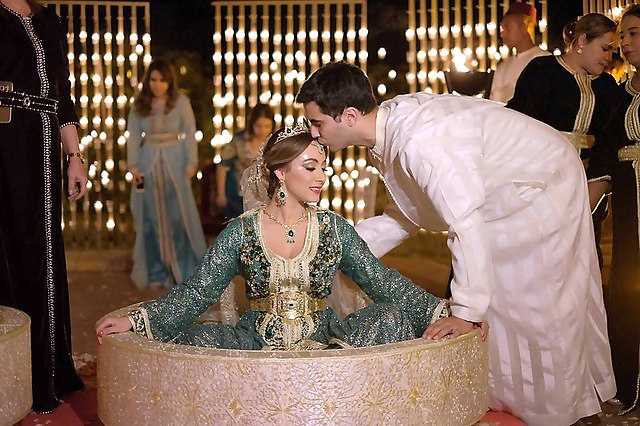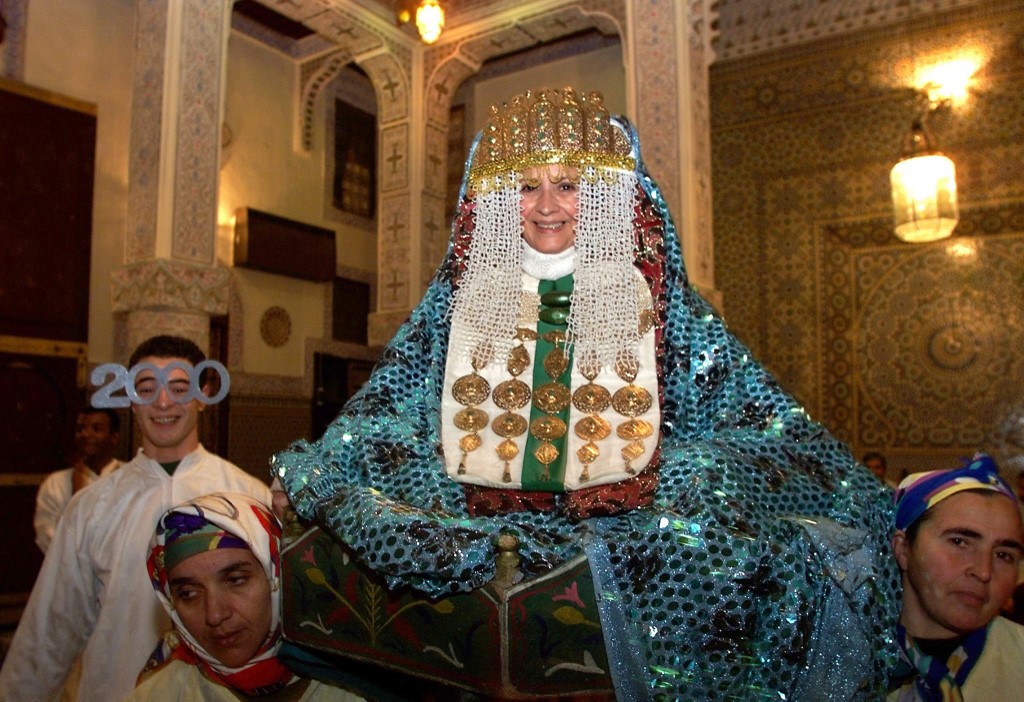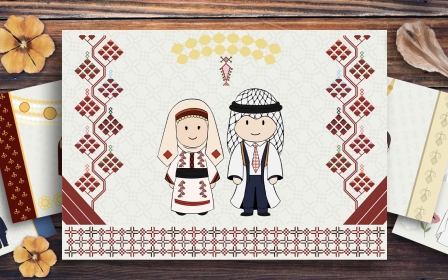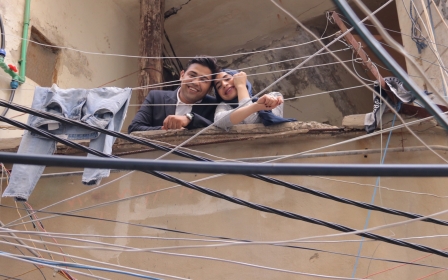Kaftans and hammams: An inside look at Moroccan weddings
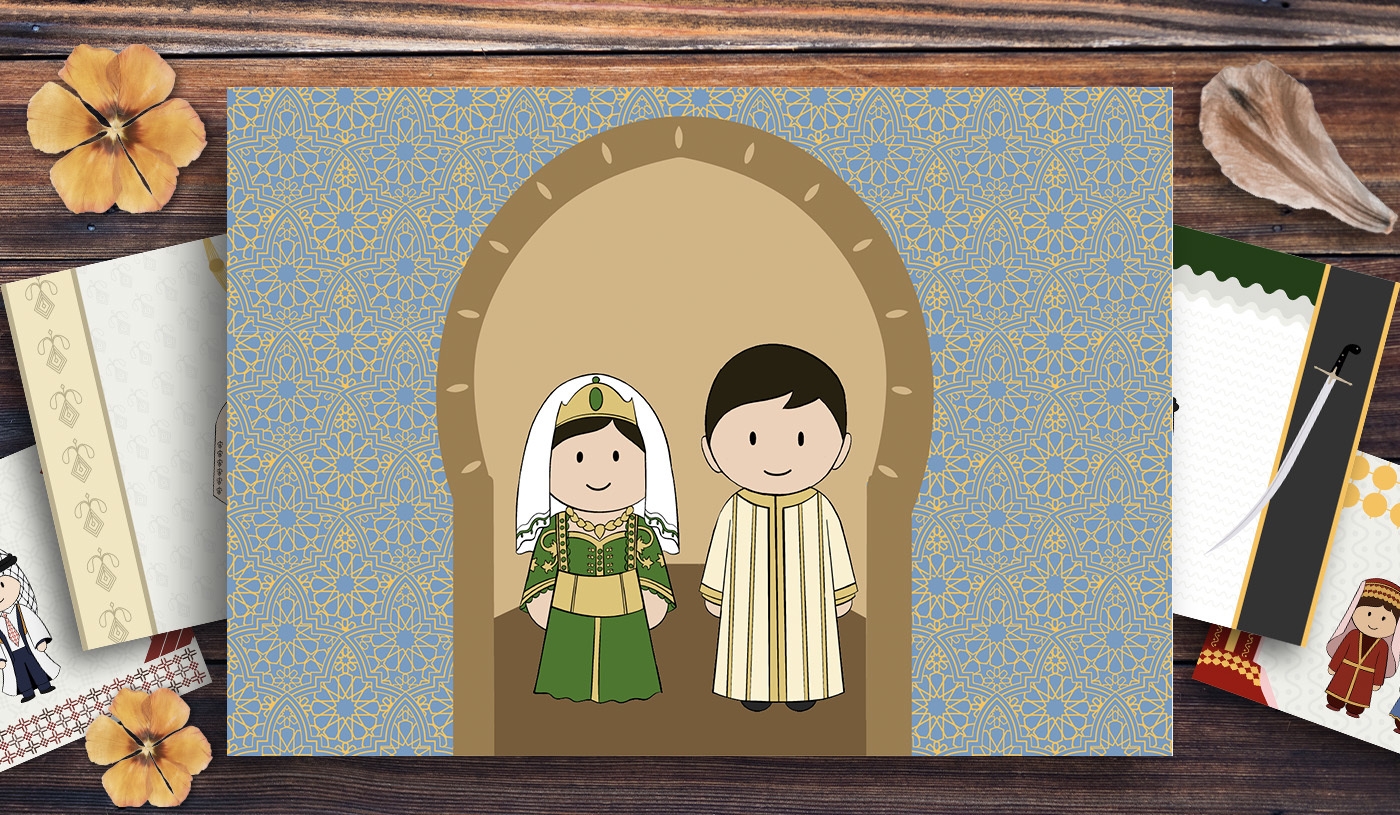
Colourful, rich and flavoursome are some of the best ways to describe traditional Moroccan weddings. Every Moroccan wedding is an incredible journey for the senses, although traditions can vary slightly between families.
The weddings can often span days, with each evening themed around a specific event. Many different factors govern how the wedding will pan out, from the family’s income to how modern or conservative they are.
Many of the traditions, from the clothing to the dancing, have survived centuries and display the culture’s richness.
The North African country is home to a sizable population of around 37 million people, and although it is made up mainly of Muslims, it also has pockets of Jews, Amazighs and other Arabs who also showcase their own unique heritage at their weddings.
This article is part of a series. You can find out more about other wedding traditions here.
New MEE newsletter: Jerusalem Dispatch
Sign up to get the latest insights and analysis on Israel-Palestine, alongside Turkey Unpacked and other MEE newsletters
The initial meeting
Traditionally, young couples will meet after being scouted at a wedding, hammam or through a mutual acquaintance.
Initial contact between families is usually made by women, with a female family member or relative from the groom’s family initiating the conversation and making a visit to the bride-to-be’s home.
At the visit, some female members from the groom’s family will observe the bride-to-be, examining her to see if she is a good fit for the groom. In some more remote villages, stories circulate about situations where the bride-to-be is asked to chew on dried fruits to inspect her teeth, or her eyes are followed with a needle to ensure she has good eyesight, as well as determining if she speaks without any impediments.
Today, however, things have changed slightly, and in more modern examples, the newlyweds will often ask questions about their history of dating and relationships.
The khutuba
Once the women of the family have gauged that the bride-to-be is the right person for the groom, it’s time for the men to visit the bride’s family. Armed with gifts for the future bride, the men of the family will make the engagement official.
This is typically a small and intimate setting, where an elder in the groom’s family will formally ask for the bride’s hand. The answer is given on the spot and the parents give their blessing for the marriage.
Known as the khutuba, or engagement, this marks the official start of the wedding ceremonies and is commemorated with the reading of surah al-Fatiha, a passage from the Quran.
At this point, the families will discuss all the finer details of the wedding arrangements and logistics, including the budget, dowry and a date for the big day.
Next, the families must sign the marriage contract under Islamic law, a stage that is regarded as one of the most important in the marriage process. The signing of the certificate is done in the presence of an adoul, the Arabic name for a notary.
Wedding preparations
After the marriage contract is signed, the newlyweds have free rein to commence the preparations for the big day.
Some brides can wear up to seven different outfits in the lead up to the wedding day, each more lavish and elaborate than the other.
Most brides will enlist the help of a negafa, or a wedding planner and stylist, who assists the bride in planning the wedding and arranging the various outfits.
While traditionally wedding outfits will be tailor-made, today, most will resort to renting their wedding outfits because of the extortionate costs associated with bespoke pieces.
At Moroccan weddings, close attention to detail is paid to the decor, from the chosen colours to the jewellery the bride dons.
A key tradition apparent at most Moroccan weddings is the amaria - a bejewelled roofed platform that is carried by men while the bride sits inside it. The amaria was historically simple in design, made from wood and was reserved for noble families and the elite. Today it is used at almost all weddings and is much more flashy.
Weeks before the big day itself, it is customary for family members to band together and lovingly make pastries and cook food, ready to be served to guests and well-wishers.
Kaftans and clothing
One of the most iconic aspects of a traditional Moroccan wedding is the embroidered and embellished outfits.
The distinctive designs vary in colour, but one of the most popular is the green and gold kaftan worn for the henna ceremony. In Moroccan tradition, green symbolises good luck.
Whereas a white kaftan is reserved for the wedding day, symbolising purity, there are several other designs that are worn in the lead up to the day itself.
The fassia, known as the Fez outfit, is a silk garment topped with a jewel-encrusted headpiece that has pearls draping from it. Around the bride’s neck and chest area are rows of pearls and gold, extending down to her torso. The full outfit is heavy and can be cumbersome to walk in. But nonetheless, it remains a tradition that is still practised today.
The women of Rabat will mostly wear blue when it comes to their wedding outfits. Known as the R’batia, the kaftan is a vibrant shade of blue and is covered in silver embroidered designs and layers of crystal and silver jewellery.
The outfit is covered in precious stones, ranging from emeralds to rubies and pearls.
In contrast to this, the Sahrouia style donned by the women from the Moroccan Sahara consists of long fabric that is folded over several times, giving a layered look. The look resembles the traditional clothing worn by women in Mauritania. To complement the outfit, traditional accessories are worn with it.
Some Sahrawi brides will wear a tiara made from amber and seashells, and necklaces made from pearls.
The Soussia style of dress, worn by Amazigh women and women from the Berber regions, differs depending on where in the region the bride is. Each tribe wears a slightly different version of the Soussia dress, but one thing they all have in common is the opulent jewellery that covers the whole outfit.
Brides from the Souss region will finish their outfits off with a crown called tawnza, and layers of bracelets known as tanbalat. The classic brushed silver and stone-encrusted earrings worn by Amazigh women are referred to as takhersin.
The outfit is only completed when the silver belt is tied around the waist of the bride, and she slips into her leather stitched and patterned shoes, called edokan.
The hammam and henna
While most brides are typically nervous before their big day, in Morocco, they take a few days in the run-up to the wedding to relax and pamper themselves.
The tradition is one that is enjoyed with other female relatives and future in-laws, who take it as an opportunity to bond and celebrate the new union.
The hammam is a steamy public bath where women will go to purify themselves through hours of scrubbing and massaging. Ghassoul, a type of clay mixed with water, is applied to the skin to clarify it. Some also believe that the mixture protects the bride from the "evil eye".
When the bride comes out of the hammam, she will spend hours getting her hair and make-up done, a part of the process that many women look forward to.
The more superstitious will break an egg on the bride’s head, an act believed to bring good luck and blessings to her.
The hammam rituals are followed by an evening of dancing and singing, known as the henna. Here, the bride will wear a green or gold kaftan and have her hands decorated with henna patterns.
Some believe the tradition represents fertility and marital bliss. The evening is concluded with a large dinner of traditional foods, and the groom’s family gives the bride a number of gifts, ranging from sugar and milk to kaftans and clothes to be worn on the wedding night.
The big day
Guests will pour into the wedding venue late in the evening, at around 9 or 10pm. Sweet drinks from fruit juices to mint tea will be flowing throughout the night, as well as traditional pastries.
The groom’s family will come bearing gifts, which traditionally include a gold belt and bracelets, a range of silk scarves, and a basket filled with henna, incense, meska (Arabic gum) and flowers. The hampers of gifts are displayed at the wedding reception.
The bride and groom will make their entrance with much fanfare and to an orchestra of music. The male family members, dressed in their best clothing, will carry the amaria and then take their seats close to the front of the wedding venue.
At some point during the ceremony, the bride and groom will give each other milk and dates and exchange rings, symbolising the sweetness of the new chapter of their lives.
Throughout the course of the evening, the bride will slip away to change her outfit several times. The bride and groom are both carried on a mida, an unroofed circular platform that the newlyweds sit on while a chorus of cheers beams from the wedding guests as they celebrate their union.
The wedding concludes with copious amounts of food. Bastilla, a dish that combines scrambled eggs, chicken and a dusting of icing sugar, is a firm favourite, alongside dishes containing chicken and lamb, followed by fruit and ice cream.
This article is available in French on Middle East Eye French edition.
Middle East Eye delivers independent and unrivalled coverage and analysis of the Middle East, North Africa and beyond. To learn more about republishing this content and the associated fees, please fill out this form. More about MEE can be found here.


